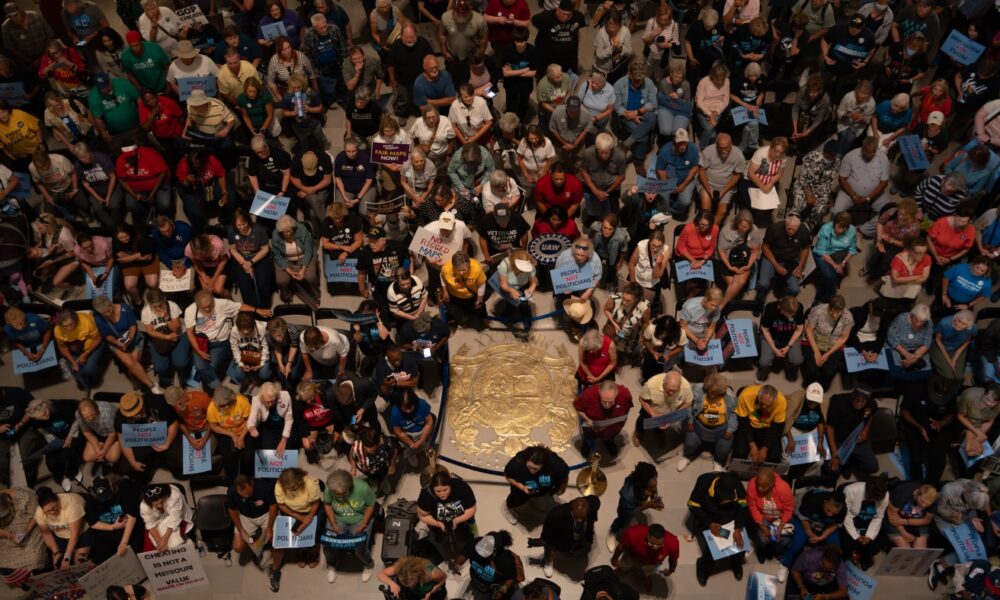The narratives of the American West are rich with both triumph and tragedy, a duality explored in depth by authors Paul Andrew Hutton and Peter Cozzens. Their recent works, “Undiscovered Country: Triumph, Tragedy and the Shaping of the American West” and “Deadwood: Gold, Guns and Greed in the American West,” respectively, provide contrasting yet complementary perspectives on a defining era of American history.
Hutton’s book spans centuries and thousands of miles, beginning before the American Revolution when the notion of the “West” encompassed territories that are now considered part of the Eastern United States. In contrast, Cozzens narrows his focus on the town of Deadwood, South Dakota, utilizing its tumultuous history as a lens to examine broader themes such as economic greed and the displacement of Native Americans. Both authors emphasize the personal stories of key figures to illustrate their points.
Through engaging stories of historical figures like Davy Crockett, Daniel Boone, and Sitting Bull, Hutton frames the narrative of the American West as integral to the nation’s identity. He seeks to balance pride in American achievements with an acknowledgment of the accompanying tragedies faced by Indigenous peoples. Cozzens, meanwhile, concentrates on Deadwood’s lawless environment, highlighting how unrestrained ambition and greed shaped the lives of its inhabitants.
Exploring Historical Perspectives
Both authors recently shared insights at the Buffalo Bill Center in Cody, Wyoming, where they participated in a joint presentation. Their collaboration reflects a shared commitment to illuminating the complexities of American history. In a video interview, Hutton articulated his desire to depict the West as a foundational aspect of American identity, stating, “The story of the West is the story of America and the first great epic of American history.”
Cozzens echoed this sentiment, noting that his portrayal of Deadwood serves as a microcosm of American society when unchecked greed prevails. He stated, “This is an opportunity for people to see how their fellow Americans behaved when their taste for profit-making was allowed to run rampant.”
Both authors grapple with the implications of myth-making in the American narrative, particularly when discussing the concept of manifest destiny and its resurgence in contemporary political discourse. Hutton emphasized the importance of recognizing both the triumphs and tragedies within this narrative, advocating for a clear-eyed examination of history. He remarked, “We can take pride from those moments that uplift us, but temper it with the tragic lives of those who weren’t part of that story.”
Cozzens highlighted the need for a nuanced understanding of the American West, acknowledging the injustices faced by Native Americans. He pointed out that the characters in “Deadwood,” while compelling, were inherently part of a larger narrative that included the violation of treaties and the dispossession of Indigenous lands.
Shifting Icons of the West
As American culture evolves, so too does the perception of its historical icons. Hutton and Cozzens discussed the shift in prominence from figures like Davy Crockett and Daniel Boone to characters portrayed in modern media, such as Seth Bullock and Al Swearengen from the acclaimed HBO series “Deadwood.” Cozzens expressed concern that although entertaining, this portrayal may oversimplify the complex realities of the West. “I think more is lost than gained,” he said, cautioning against the assumption that the series encapsulated the entirety of Western history.
Hutton, a longtime admirer of film and television’s influence, noted the current Western renaissance in popular culture, tied to the success of productions like Taylor Sheridan’s “Yellowstone.” He suggested that while these stories benefit from a modern audience, they also provide a positive reflection of the Western spirit, which remains relevant today.
The discussions between Hutton and Cozzens reveal the intricate tapestry of the American West, where stories of heroism coexist with accounts of injustice. Their works not only document historical events but also encourage contemporary readers to reflect on the implications of this shared past. In doing so, they contribute to a broader understanding of the American identity, shaped by both triumph and tragedy.







